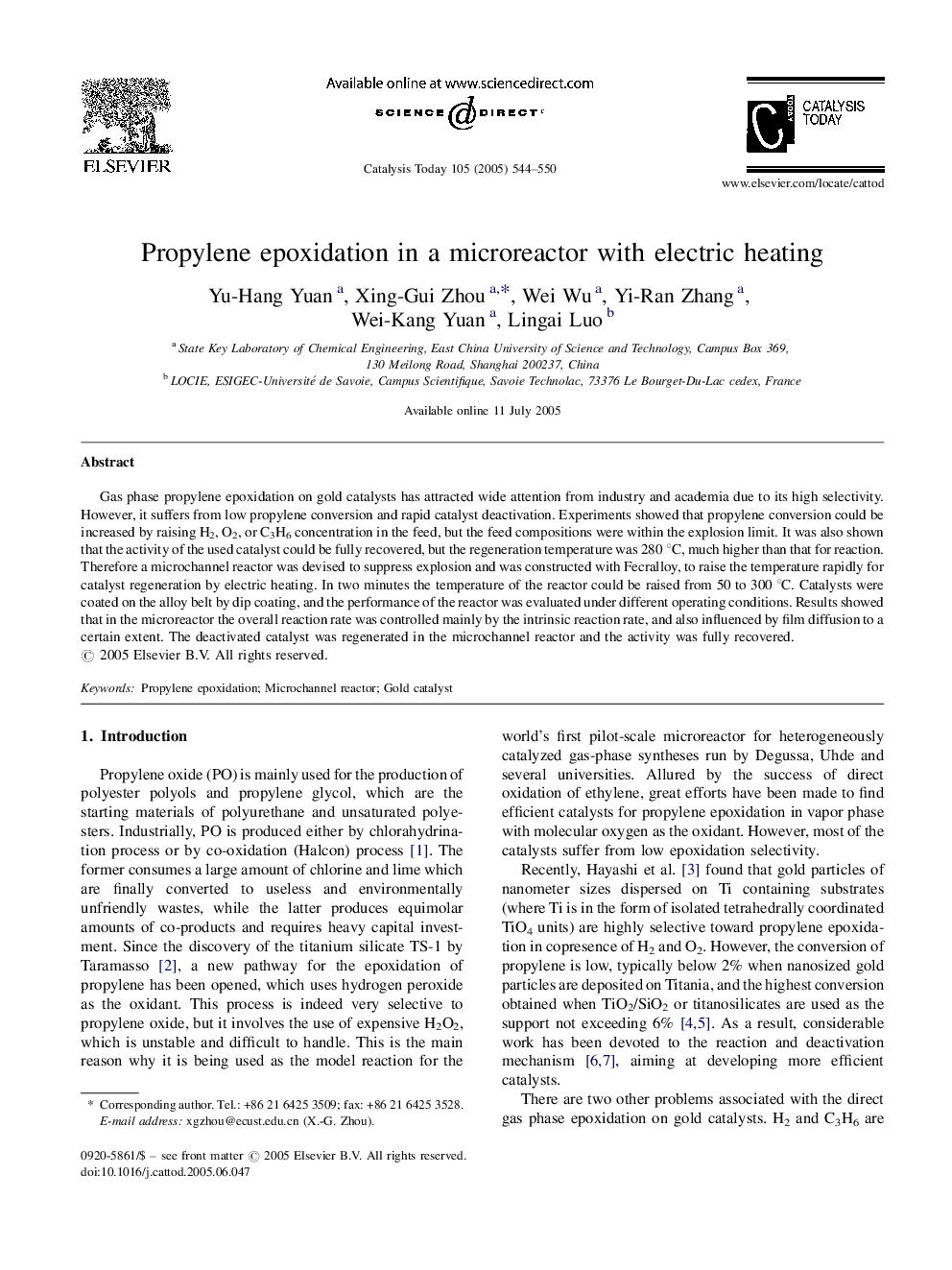| Article ID | Journal | Published Year | Pages | File Type |
|---|---|---|---|---|
| 9610352 | Catalysis Today | 2005 | 7 Pages |
Abstract
Gas phase propylene epoxidation on gold catalysts has attracted wide attention from industry and academia due to its high selectivity. However, it suffers from low propylene conversion and rapid catalyst deactivation. Experiments showed that propylene conversion could be increased by raising H2, O2, or C3H6 concentration in the feed, but the feed compositions were within the explosion limit. It was also shown that the activity of the used catalyst could be fully recovered, but the regeneration temperature was 280 °C, much higher than that for reaction. Therefore a microchannel reactor was devised to suppress explosion and was constructed with Fecralloy, to raise the temperature rapidly for catalyst regeneration by electric heating. In two minutes the temperature of the reactor could be raised from 50 to 300 °C. Catalysts were coated on the alloy belt by dip coating, and the performance of the reactor was evaluated under different operating conditions. Results showed that in the microreactor the overall reaction rate was controlled mainly by the intrinsic reaction rate, and also influenced by film diffusion to a certain extent. The deactivated catalyst was regenerated in the microchannel reactor and the activity was fully recovered.
Related Topics
Physical Sciences and Engineering
Chemical Engineering
Catalysis
Authors
Yu-Hang Yuan, Xing-Gui Zhou, Wei Wu, Yi-Ran Zhang, Wei-Kang Yuan, Lingai Luo,
